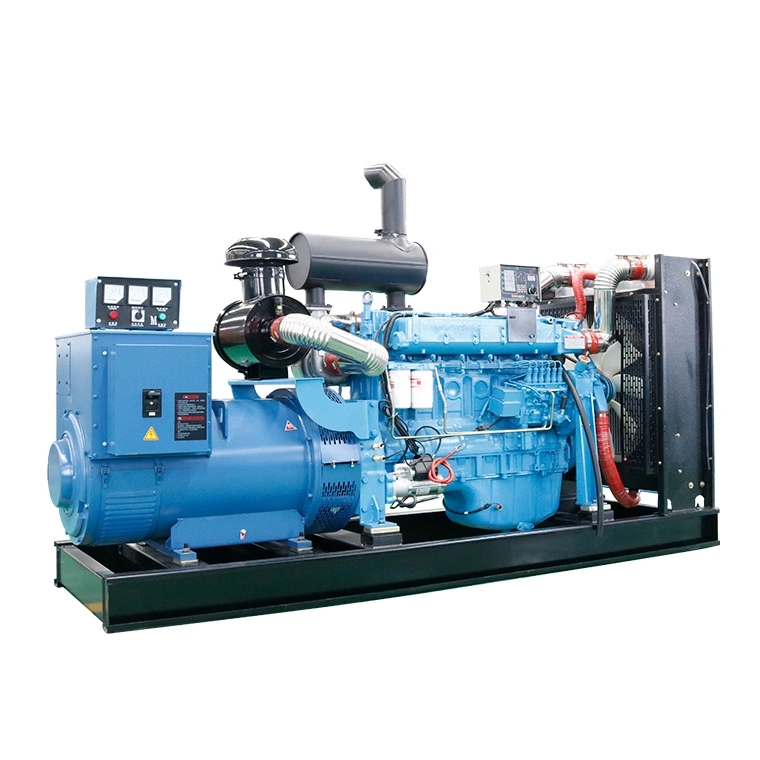Introduction
Disasters, both natural and man-made, can strike at any time, leaving communities devastated and in urgent need of assistance. In the aftermath of such events, one of the most critical requirements is access to reliable power supply to support emergency response efforts, communication systems, medical facilities, and essential services. Diesel generators have long been a vital tool in disaster relief operations, providing a dependable source of power in challenging and often remote environments. This article explores the role of diesel generators in disaster relief efforts, their key benefits, challenges, and best practices for deployment.
The Need for Power in Disaster Relief Operations
In the wake of a disaster, power outages are a common occurrence due to damaged infrastructure, downed power lines, and fuel shortages. Without access to electricity, emergency response efforts are severely hampered, hindering communication, medical care, water purification, and other essential services. Diesel generators play a crucial role in bridging this gap by providing a reliable source of power that can be quickly deployed to affected areas.
Key Benefits of Diesel Generators in Disaster Relief
1. Reliability: Diesel generators are known for their robustness and reliability, making them ideal for use in disaster relief operations where consistent power supply is essential. Unlike renewable energy sources that depend on weather conditions, diesel generators can operate continuously regardless of external factors.
2. Portability: Diesel generators come in a range of sizes, from small portable units to large trailer-mounted systems, making them highly adaptable for deployment in various disaster scenarios. Their mobility allows for quick transportation to remote or hard-to-reach areas where power is urgently needed.
3. Fuel Efficiency: Diesel generators are more fuel-efficient than gasoline generators, providing longer run times and better cost-effectiveness in prolonged disaster relief operations. This is especially important in situations where fuel supplies may be limited or difficult to replenish.
4. Power Output: Diesel generators are capable of producing a significant amount of power, making them suitable for running critical infrastructure such as hospitals, emergency shelters, and communication networks during disaster response efforts. Their high power output ensures that essential services can continue uninterrupted.
Challenges and Considerations
While diesel generators offer numerous advantages for disaster relief operations, there are also challenges and considerations that need to be addressed to ensure their effective deployment:
1. Fuel Supply: One of the primary challenges of using diesel generators in disaster relief is ensuring a reliable fuel supply. In 30kw diesel generator for small-scale operations of a disaster, fuel shortages and disruptions in supply chains can make it difficult to obtain the fuel needed to keep generators running. Adequate fuel storage, contingency plans, and coordination with local authorities are essential to address this challenge.
2. Maintenance and Service: Diesel generators require regular maintenance to ensure optimal performance and reliability. In the midst of a disaster response operation, access to spare parts, tools, and trained technicians may be limited, posing a challenge in maintaining generators in good working condition. Preemptive maintenance schedules and contingency plans for repairs are crucial considerations.
3. Environmental Impact: Diesel generators are known for their emissions of pollutants such as nitrogen oxides, particulate matter, and carbon monoxide, which can have negative environmental and health effects. Minimizing the environmental impact of diesel generators through proper emissions control measures, fuel management strategies, and compliance with regulations is essential in disaster relief operations.
Best Practices for Deploying Diesel Generators in Disaster Relief
To maximize the effectiveness of diesel generators in disaster relief operations, the following best practices should be considered:
1. Needs Assessment: Conduct a thorough assessment of power requirements and priorities in the affected area to determine the size and capacity of diesel generators needed. Identify critical facilities, such as hospitals, water treatment plants, and emergency shelters, that require continuous power supply.
2. Logistics Planning: Develop a comprehensive logistics plan for transporting, fueling, and deploying diesel generators to the disaster-affected area. Consider factors such as access routes, security, and coordination with local authorities to ensure smooth deployment.
3. Fuel Management: Establish a fuel management system to track fuel consumption, monitor fuel levels, and plan for refueling operations. Maintain adequate fuel reserves and establish protocols for fuel delivery and storage to prevent disruptions in generator operation.
4. Training and Capacity Building: Provide training to local personnel on the operation, maintenance, and troubleshooting of diesel generators to ensure their effective use during disaster response operations. Build local capacity for generator management and maintenance to enhance sustainability and resilience.
5. Monitoring and Evaluation: Implement a monitoring and evaluation system to track the performance of diesel generators, assess their impact on relief operations, and identify areas for improvement. Regularly review operational data, fuel consumption rates, and maintenance records to optimize generator efficiency.
Conclusion

Diesel generators play a critical role in disaster relief efforts by providing essential power supply in times of crisis. Their reliability, portability, fuel efficiency, and high power output make them indispensable tools for supporting emergency response operations and maintaining vital services in disaster-affected areas. Despite challenges such as fuel supply, maintenance requirements, and environmental considerations, diesel generators can be effectively deployed in disaster relief with proper planning, logistics, and training. By following best practices and guidelines for deploying diesel generators, relief organizations can enhance their capacity to respond to disasters and support communities in need.
In summary, diesel generators are a lifeline in disaster relief operations, offering a reliable source of power when it is needed most. Their versatility, durability, and power capabilities make them indispensable assets in mitigating the impact of disasters and facilitating recovery efforts. As technology continues to evolve, diesel generators will remain a cornerstone of disaster relief operations, providing hope and resilience to communities facing adversity.
